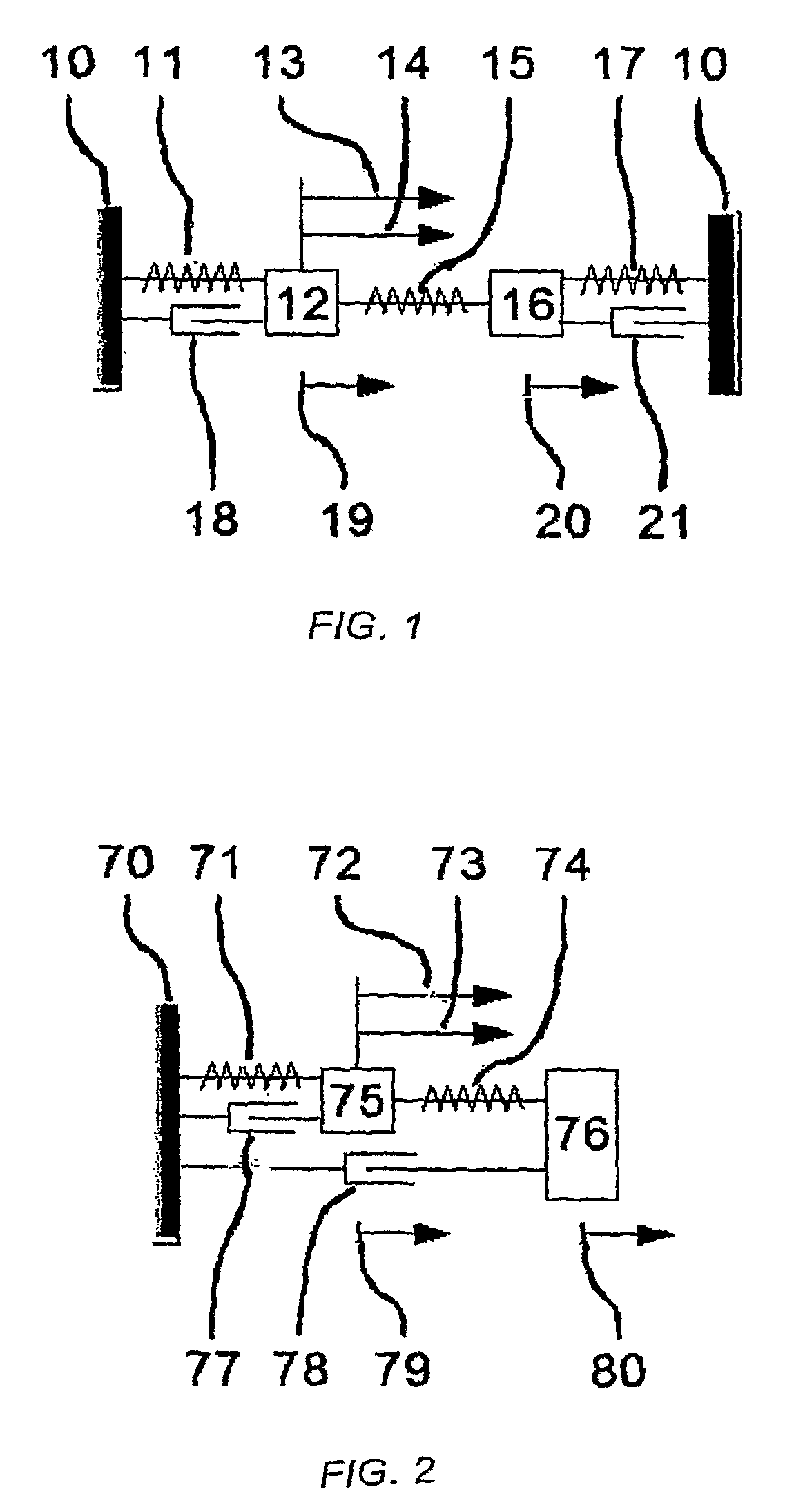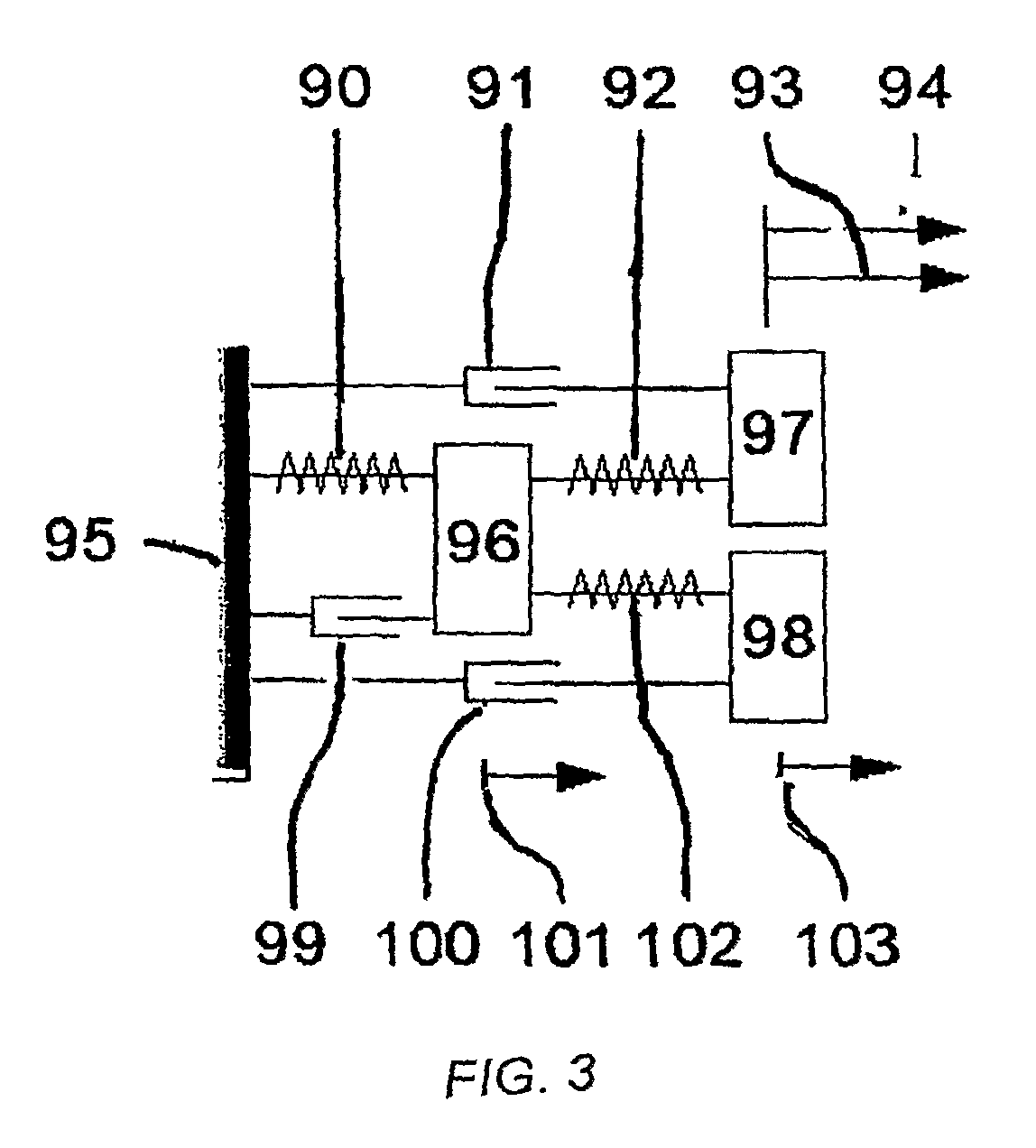Coupled Mass-Spring Systems and Imaging Methods for Scanning Probe Microscopy
a mass spring system and scanning probe technology, applied in the field of cantilevers and imaging methods for use in atomic force microscopy, can solve the problem that the scanning probe microscope is not sufficient to probe the pre-processed material, and achieve the effect of improving the capability of scanning probe microscopes, higher versatility, and high performan
- Summary
- Abstract
- Description
- Claims
- Application Information
AI Technical Summary
Benefits of technology
Problems solved by technology
Method used
Image
Examples
Embodiment Construction
[0034]The invention provides a coupled mass-spring system for use as a scanning probe microscope, and method of using it. In general terms, the system comprises one or more oscillators including an actuator oscillator, a probe on one of the oscillators for contacting a sample, and a sensor oscillator spaced from the probe-bearing oscillator and coupled to the probe-bearing oscillator for transfer of energy between the sensor oscillator and the probe-bearing oscillator. This arrangement of components enables mechanical amplification of a desired frequency in the sensor oscillator to improve the sensitivity and measurement range of the scanning probe microscope. In an embodiment of the invention, the probe-bearing oscillator is an indentation oscillator. In another embodiment of the invention, the probe-bearing oscillator is the actuator, which serves as an actuator / indentation oscillator.
[0035]The sensor oscillator and the probe-bearing oscillator can be coupled by any appropriate ar...
PUM
 Login to View More
Login to View More Abstract
Description
Claims
Application Information
 Login to View More
Login to View More - R&D
- Intellectual Property
- Life Sciences
- Materials
- Tech Scout
- Unparalleled Data Quality
- Higher Quality Content
- 60% Fewer Hallucinations
Browse by: Latest US Patents, China's latest patents, Technical Efficacy Thesaurus, Application Domain, Technology Topic, Popular Technical Reports.
© 2025 PatSnap. All rights reserved.Legal|Privacy policy|Modern Slavery Act Transparency Statement|Sitemap|About US| Contact US: help@patsnap.com



